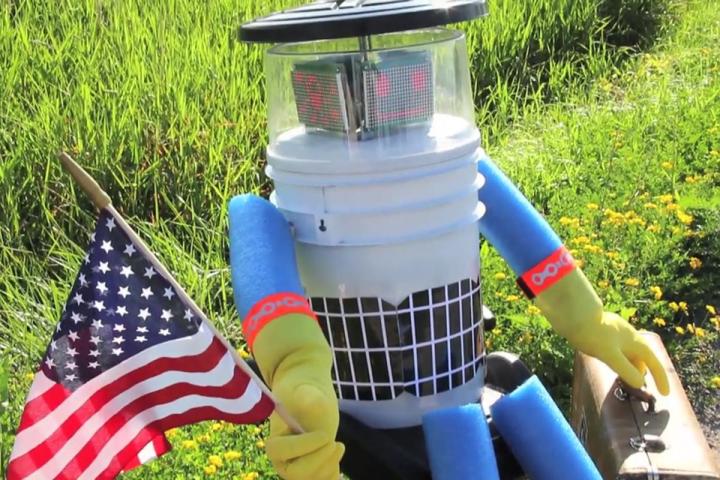
However, the robot’s mammoth journey, which in the U.S. was supposed to take it from Boston to San Francisco, ended abruptly in Philadelphia in the early hours of Saturday when some evildoer, seeing hitchBOT at the side of the road waiting quietly for its next ride, decided to go ahead and give the robot a severe bashing.
A photo of the parts that made up the hitchhiking robot – a torso, legs, a couple of arms (no sign of the head) – was posted on the android’s official website on Sunday with the message, “I guess sometimes bad things happen to good robots! My trip must come to an end for now, but my love for humans will never fade.” Yes, it was all very sad.
But there could yet be a happy ending to this sorry tale as the team behind hitchBOT has been inundated with generous offers of help ever since news of the droid’s violent demise went global over the weekend.
Among those who’ve been in touch is a group of tech enthusiasts from Philadelphia. Perhaps troubled by the idea that their city may become forever known as a place hostile to hitchhiking robots, Georgia Guthrie, executive director of The Hacktory, said in a post, “If we get the OK from the creators to repair or replace the needed parts for hitchBOT, we’ll be happy to do so.”
Guthrie added, “We feel it’s the least we can do to let everyone, especially the robot community, know that Philly isn’t so bad, it’s got some really great stuff going on, and great people.”
It shouldn’t be too tricky a task to reassemble hitchBOT. Its design is fairly basic, comprising parts such as a GPS tracker, an on-board camera that snaps a picture every 20 minutes, and a computer that powers basic conversation with anyone kind enough to offer it a ride. It’s not known if hitchBOT had anything to say to its attacker before its head came off, though “You ain’t heard the last of this, sucker” would’ve been appropriate given the circumstances.
hitchBOT’s creators, Frauke Zeller and David Smith, decided to put the robot on the road as part of a social experiment to see if robots can trust humans. Despite having its answer, the team is well aware that the news of hitchBOT’s destruction has been upsetting for the many people who’ve been following its international exploits online. With this in mind, Zeller told the Globe and Mail her team will try to decide this week whether to reboot the android and put it back on the road.
If they do, it’ll certainly be interesting to see how far hitchBOT gets second time around.
Editors' Recommendations
- Check out the latest version of Tesla Bot in video update
- This LG robot could soon be serving your restaurant meal
- Drone and rover tag teams could help solve the world’s deadly land mine problem



